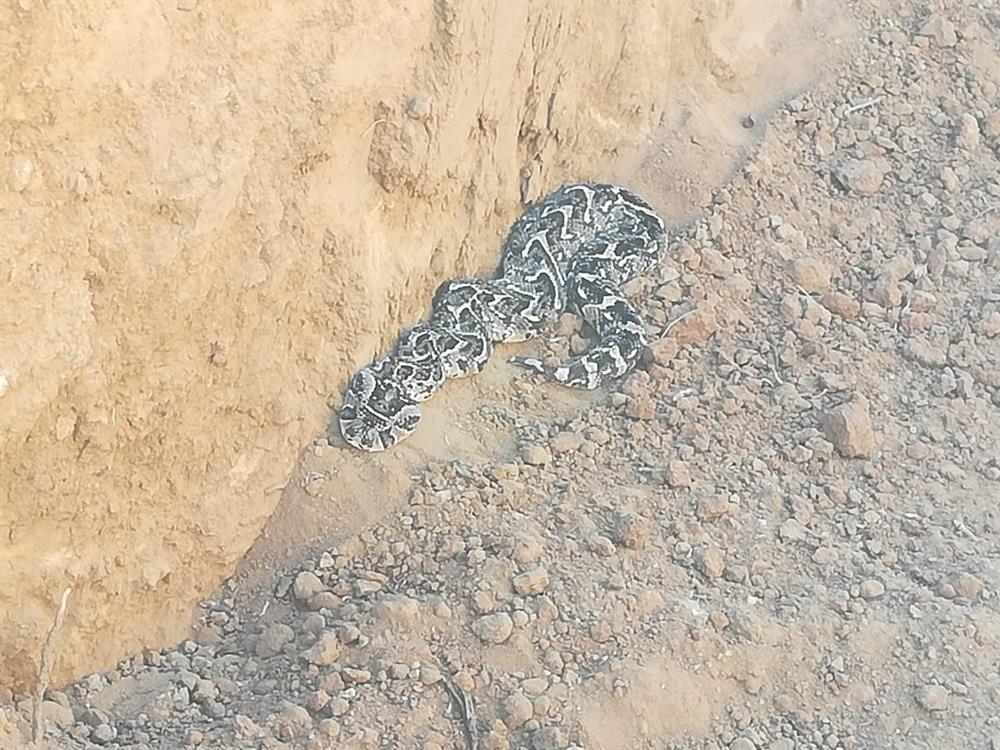KAROO NEWS - Summer is here and the slithering reptiles of Graaff-Reinet and surrounds are hungry and on the hunt.
Watch your step and be careful when you fiddle in the garden, as some of these serpents spit or strike at high-speed when they feel threatened. According to Dr Roaul Strydom, a veterinary surgeon at Camdeboo Veterinarian Clinic, the six venomous snakes found in Graaff-Reinet and surrounding areas include the puff adder, horned adder, boomslang, Cape cobra, rinkhals and Cape coral snake.
The puff adder is described as the fastest striking snake in Africa and, according to Strydom, also the snake responsible for more human bites than any other snake in South Africa.
The Cape cobra can cause fatal results within one and four hours, and be aware of the spitting cobra, which looks you straight in the eye from a spitting range of two to three metres, causing death from a distance. The boomslang, on the other hand, is a shy, tree-dwelling snake that actively hunts chameleons and bird chicks.
"It inflates its throat and hisses if harassed, with a back-fanged but wide-gape, so it can bite most body parts," Strydom said. This tree-dwelling snake, with its slow-acting venom, can cause death two to three days after the bite.
The Cape cobra, with shiny scales and golden-yellow, brown, black, olive or speckled skin, spreads its hood when agitated. It actively hunts rodents, toads, birds and other snakes.
"With short (0,5cm) front fangs, it injects a massive quantity of potent venom and can cause death due to respiratory failure within one to four hours," Strydom said. Strydom also warned against the rinkhals, which often plays dead. "It fakes death. Never pick up a 'dead' rinkhals."
 Family of the puff adder, the night adder, captured in SANParks.
Family of the puff adder, the night adder, captured in SANParks.
Then there is the blotchy tan and reddish-brown patterned horned adder, which is an ambush predator that shuffles down into sand at the base of bushes. Don't forget the stocky Cape coral snake, which is only seen after heavy rain, excavations or in disused termite mounds. This snake is also very poisonous.
The mildly venomous snakes include the spotted harlequin, spotted skaapsteker, Karoo sand snake and the toad-eating herald snake. Snakes to leave alone, but that aren't deadly, include the brown house snake, spotted house snake, egg-eater, slugeater, Cape wolf snake and Delalande's beaked blind snake.
Strydom said the most common venomous snakes in the Karoo are the boomslang, puff adder and Cape cobra, while the most common non-venomous snakes are the brown house snake, Karoo sand-snake and skaapsteker.
When a snake strikes
If possible, take a photo of the snake for identification purposes if you are not sure what kind of snake it is. Get immediate medical attention - especially in the case of a Cape cobra. This snake's venom spreads very quickly and can cause breathing problems. Move as little as possible and try to stay calm.
Under no circumstances should you follow home remedies such as trying to suck the poison, put ice on the wound or burn the wound.
'We bring you the latest Karoo news'
















